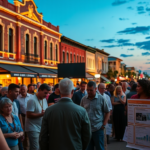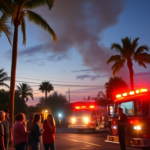I’m sorry, there seems to be a mix-up. Let’s correct this by focusing on the topic of free-standing emergency rooms in the Rio Grande Valley. Here is your requested article:
—
After a Decade, Free-Standing ERs in the Valley: Success or Setback?
After a decade since the introduction of free-standing emergency rooms (ERs) in the Rio Grande Valley (RGV), South Texas Health System (STHS) reports success stories that illuminate their value to the community. However, opinions vary among local residents and stakeholders, making it timely to assess their impact and future potential in this growing region.
The Concept of Free-Standing ERs
Free-standing emergency rooms, unlike traditional hospital-attached ERs, function as independent facilities that provide immediate medical care without the overhead of a full hospital admission. Traditionally, they offer shorter wait times and act as rapid-response units for urgent medical needs, from minor injuries to more severe conditions requiring immediate attention.
In the RGV, where access to timely healthcare services previously posed challenges due to geographic and demographic factors, these ERs were introduced to meet local needs efficiently. Despite early skepticism about their viability, STHS insists that the facilities have served a critical role.
Local Impact and Community Interest
For Valley residents, accessibility to swift and efficient healthcare is paramount. Over the years, free-standing ERs have reportedly reduced wait times for urgent care, significantly impacting community health outcomes.
“These ERs have expanded our capabilities to provide immediate care to more residents, reducing the pressure on our main hospital ERs,” states Dr. Raul Hernández, a lead physician at STHS. “This means more people are getting the care they need promptly, which can be life-saving.”
Moreover, free-standing ERs have strategically been placed in underserved areas, addressing healthcare disparities across the Valley. This accessibility is crucial in South Texas, where transportation barriers previously hindered timely ER visits.
Comparing Success Against Criticisms
However, the introduction of free-standing emergency rooms hasn’t been without criticism. Concerns about billing transparency and the potential for high out-of-pocket costs have surfaced. In some cases, patients visiting a free-standing ER for non-emergency care found themselves facing unexpected bills compared to urgent care centers.
Maria López, a Harlingen resident, recounts her unexpected experience: “I went for a minor issue thinking it was like a regular clinic visit, but the bill was much higher than I anticipated. It wasn’t clear at the time what the costs might be.”
STHS responds by stating they actively work to educate patients on the specific services and associated costs upfront to prevent misunderstandings. Despite these efforts, some community members remain wary, advocating for clearer guidelines and more affordable billing practices.
Connecting to Broader Healthcare Trends
The RGV is not alone in its experiment with free-standing ERs; they are part of a larger national trend seeking flexible healthcare delivery models in diverse communities. As the healthcare landscape evolves, these facilities exemplify innovation in service delivery by offering convenient, localized care.
Additionally, the COVID-19 pandemic underscored the importance of flexible medical care options, highlighting the role free-standing ERs played in managing patient overflow from traditional hospitals.
Looking Ahead: Future Implications for the Community
As the RGV anticipates further population growth, free-standing ERs could become even more integral to the region’s healthcare infrastructure. Their potential to relieve pressure on traditional emergency rooms can support broader healthcare objectives, including patient influx from new residential developments and rising healthcare needs.
Continued dialogue between healthcare providers, policymakers, and community members remain vital to adapt these services effectively. “Healthcare is about evolution. By holding conversations about what’s working and what isn’t, we ensure these situational adjustments contribute positively,” emphasizes Dr. Hernández.
Navigating Healthcare Choices in the RGV
For residents seeking clarity and assistance regarding ER options, several tools and resources are available. STHS offers informational guides online and has engaged in community outreach to further educate Valley residents on their healthcare choices.
In closing, while free-standing emergency rooms have provided critical healthcare solutions across the Rio Grande Valley, understanding their role involves weighing successes against ongoing challenges. Ultimately, the story of these ERs reflects not only on their effectiveness within the RGV but also on the adaptable nature of healthcare systems striving to meet community interests.
—
This article examines the role of free-standing ERs in the RGV, highlighting successes while acknowledging the complexities and community responses.







